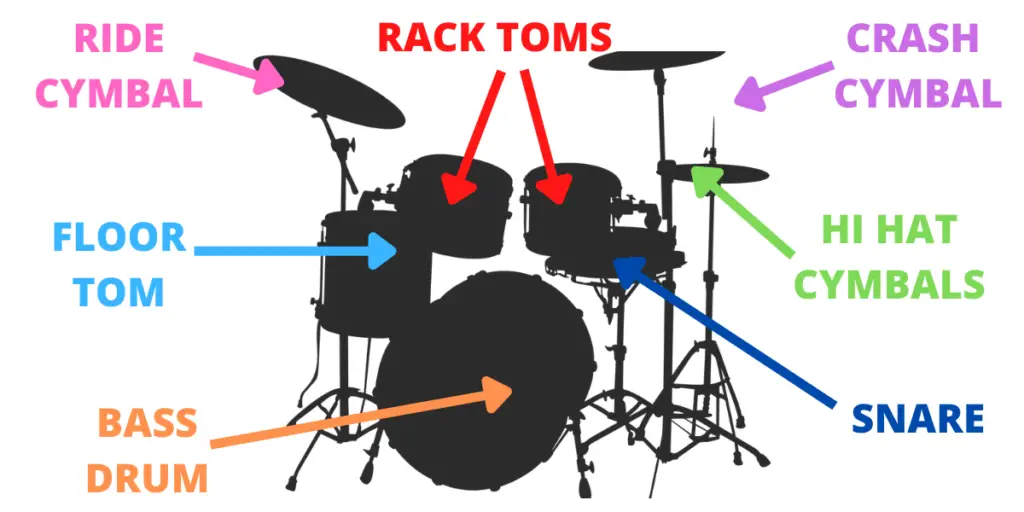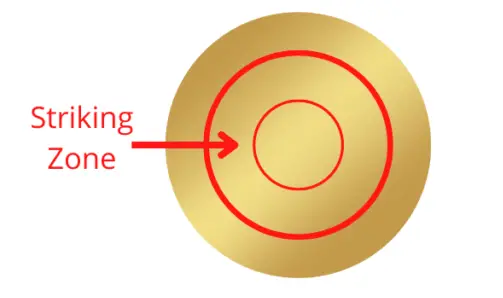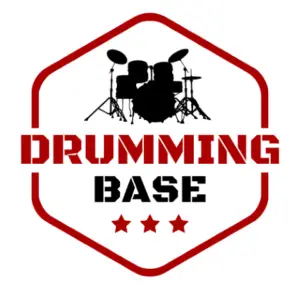The ride cymbal and the hi-hat are two of the most commonly used components of a 5-piece drum set, but what’s the difference between them? In this article I’ll compare the shape, size, sound, function and placement of each type of cymbal so you know all the key differences between them.
Ride Cymbal vs Hi-Hat
Ride cymbals have a larger diameter and are thicker compared to hi-hat cymbals. Both types of cymbal are used to maintain a beat, but ride cymbal is usually used in higher energy sections of the song. Hi-hats sound shorter and sharper compared to ride cymbals which have more volume, sustain and wash.
| Hi-Hat Cymbal | Ride Cymbal |
| Two small cymbals positioned in a stack | One large cymbal |
| 13”-16” diameter | 18”-22” diameter |
| Brighter and sharper sounding | Higher volume and sustain |
| Used in verses/ lower energy sections | Used in choruses/ higher energy sections |
| Positioned near the snare | Positioned near the floor tom |

Physical Differences
Hi-hat cymbals are thinner and smaller compared to ride cymbals.
Ride cymbals typically have a diameter of 20″ (but it can range between 18-22″) and are fairly thick. Ride cymbals are wider and thicker than both hi-hat and crash cymbals. Smaller and thinner ride cymbals sound darker and have more shimmer compared to larger and thicker ride cymbals which sound louder.
Hi-hats consist of two cymbals positioned around 1″ apart from each other. Each hi-hat cymbal has a diameter of approximately 13-16″, although it is possible to get hi-hats as small as 10″. Smaller hi-hat cymbals sound brighter and more crisp whereas larger hi-hat cymbals sound warmer, darker and louder.
Looking for more info on cymbal size and how it affects the sound? Check out my cymbal size guide to learn more.
Images link to Amazon
Comparing the Sound
The sound of a hi-hat varies depending on whether the two cymbals are open or closed.
As I mentioned previously, hi-hats consist of two cymbals stacked on top of each other. They can either be in an open position (with a gap between the cymbals), or in a closed position (no gap between the cymbals).
Whether the cymbals are open or closed is determined by the hi-hat pedal. When the pedal is pressed down, the hi-hat will be closed. The closed hi-hat is used most of the time, whilst the open hi-hat is used as an accent.
Closed hi-hat cymbals produce a very short and sharp sound which doesn’t ring out for very long at all. This is because there is no space for the cymbal to move and vibrate so the sound is brief. Open hi-hats have more sustain and shimmer since the cymbal is free to vibrate for much longer.
Hi-hat cymbals have a higher pitch so sound brighter compared to ride cymbals. This is because they have a smaller diameter, which means they also sound quieter.
In terms of shimmer and sustain, an open hi-hat cymbal is pretty similar to a ride cymbal. However, a closed hi-hat cymbal (which is used more frequently) has much less shimmer and sustain compared to a ride cymbal.
Check out this video to hear a comparison of hi-hat and ride cymbals.
Cymbal Function
Hi-hat and ride cymbals are both used to help keep the beat, rather than to provide accents like the crash cymbal does.
The hi-hat (closed) produces a shorter, sharper sound which is useful for verses where you don’t want something overpowering. The ride cymbal on the other hand sounds louder and has more wash, so is useful when you need something to take things up a notch, for example in the chorus.
The open hi-hat can be used to provide an accent when using the closed hi-hat cymbal for a section. For example, you might want to play the closed hi-hat on 1 & 2 & 3 & 4, and then the open hi-hat on the final “&” before going back to 1.
There’s no hard and fast rules really when it comes to these cymbals. The only recommendations are to avoid excessive use of the ride cymbal and the open hi-hat (unless you are going for a more aggressive sound).
How to Use the Cymbal
It’s typical to strike both the hi-hat and the ride cymbal halfway between the bell and the edge of the cymbal. You can “crash” both cymbals by hitting them on the edge (like you would with a crash cymbal), however it doesn’t sound great to everyone’s ears and produces a more unique sound.

Check out this article I’ve written about crashing a ride cymbal to learn more.
Both cymbals are also can be hit with the tip of the drumstick (rather than the shoulder as you would with a crash cymbal). This helps to produce a steady sound. Although some many drummers do prefer to hit the hi-hat using the shoulder of the stick.
It is also possible to use the hi-hat pedal to open and close the hi-hats which will create a short, sharp sound without using the drumsticks.
Cymbal Placement
On a right-handed drum kit, the ride cymbal is typically placed on the right hand side near the floor tom and is usually lower compared to the crash cymbal (which is on the left hand side). The hi-hat cymbal is positioned the lowest to the ground and is the furthest left near the snare drum.
Check out this image to demonstrate.

Here are some more articles you might find useful:



